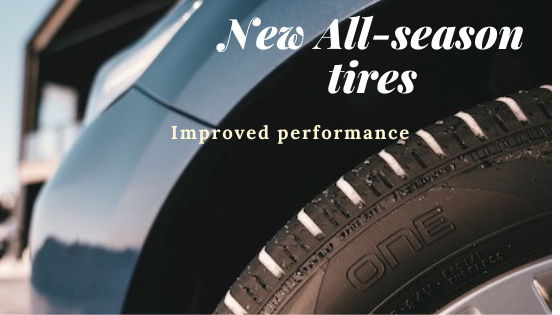When driving during the summers and the roads are covered by water, you might experience hydroplaning. Hydroplaning is when the tires lose contact with the road surface. Hydroplaning is caused by the fact that the tire can’t press away the water that is layered on top of the road surface. If the car tires can’t press the water to the sides and remain in contact the tire will be pressed up on the water layer and contact is lost with the road, you lose the ability to control the vehicle.
Factors that impact hydroplaning is how much water is present on the road surface, how deep the treads are on the tires, the quality and the design of the treads, and the tread’s ability to push away water so that the tread will remain in contact. The higher the speed the less time the tires have to disperse the water. This is why it is important to adapt the speed according to the circumstances and the worse tires that you have the better
The tread depth impacts the risks as lower tread depth translates to smaller volume of water that can be stored in the tread. The length of the contact area multiplied with the depth and the width equals the volume of the tread. As the tread depth diminishes the volume will decline. This results in a reduction of storage and transport volume. The big impact of low tread depth is why you should change to new tires once you reach the recommended threshold value of 5/32 inches.
When the tread depth decreases it impacts the hydroplaning properties so that the risk increases. The tires wet grip and its braking distance will be negatively impacted with decreasing tread depth. Also, the grip on dry roads is impacted and the braking distance is prolonged. It is recommended that you change tires when the tread starts to wear out and approach 5/32 inches and since it is important to have equal grip on all four tire positions, you will need to rotate the tires to even out differences between the front and rear tires.
The tire pressure can also impact the performance when you drive. You should always check the tire pressure s to ensure that you have the right pressure in all four tires. Underinflated tires decrease the contact area thus making it more difficult to push away the water as intended.
Tire manufacturers have addressed hydroplaning as it is a major cause of weather-related accidents during the summers season. Tire manufacturers have focused a lot on adding a lot of innovations to all-season tires to improve the ability to remove water and increase the speed it is removed. This has made the tires safer than the tires that don’t have these added these new features aimed to prevent hydroplaning.
In summary, if you purchase new tires that are proven to perform well during wet conditions you can reduce the risk for hydroplaning. In addition, you should ensure that the tires have a tread depth of more than 5/32 inches. If you adhere to this, you should be safe to drive even while it is pouring down. You do however always have to adapt your speed according to the circumstances. Speed will always have a negative impact when the weather conditions are bad. A timely change to winter tires will also reduce the wear and improve the safety once the snow arrives.
For more information regarding good tires for preventing hydroplaning, visit: https://www.nokiantires.com/
